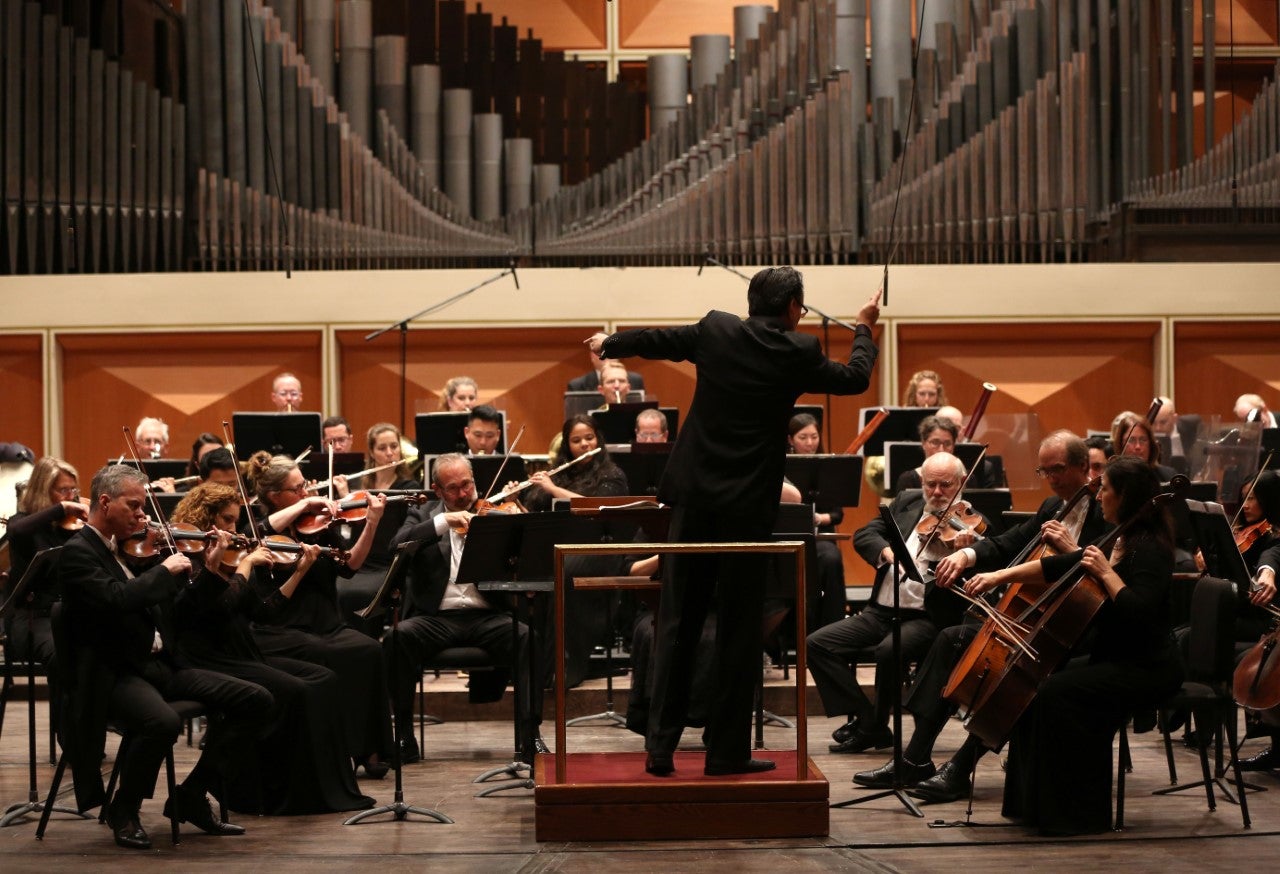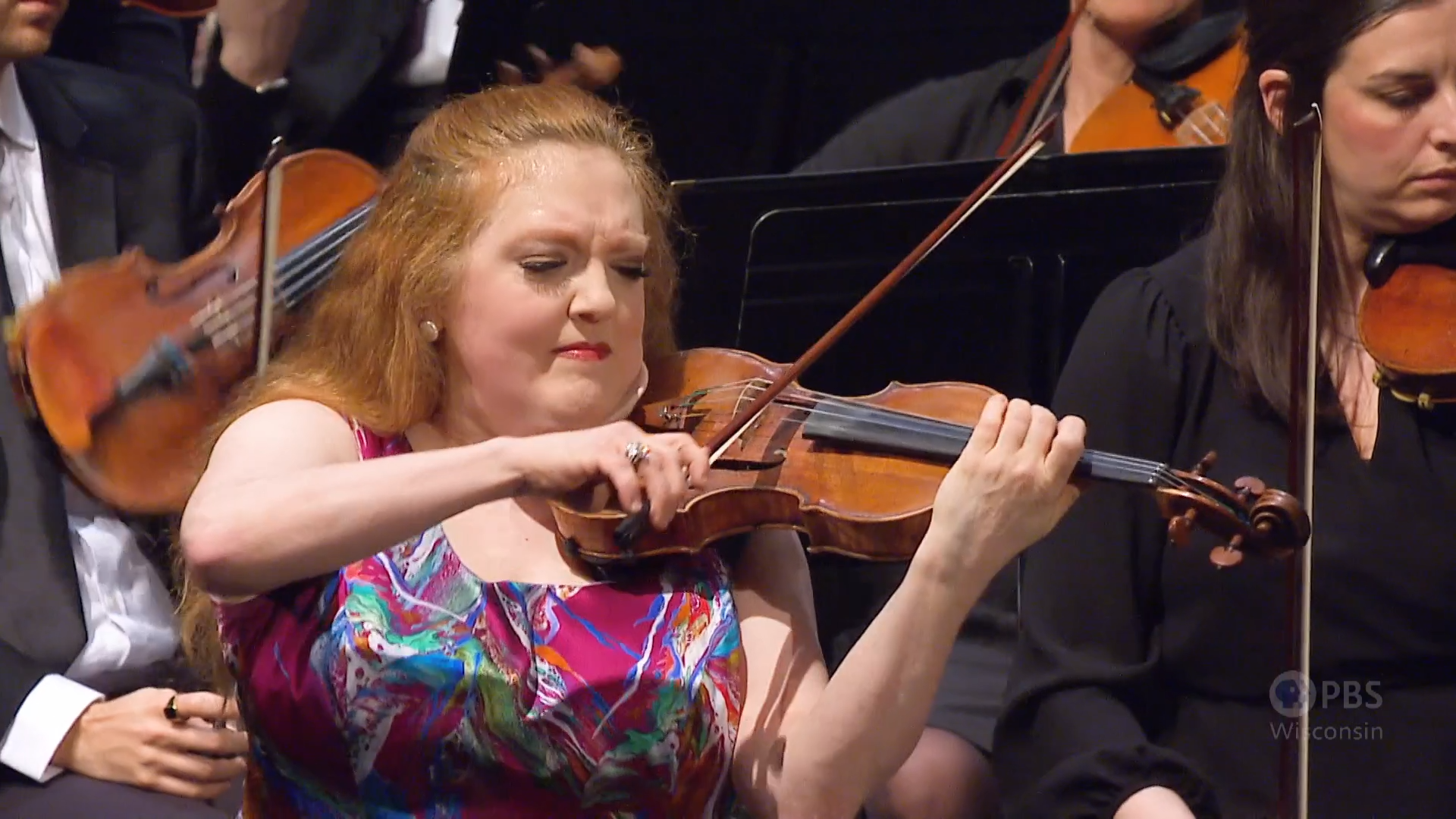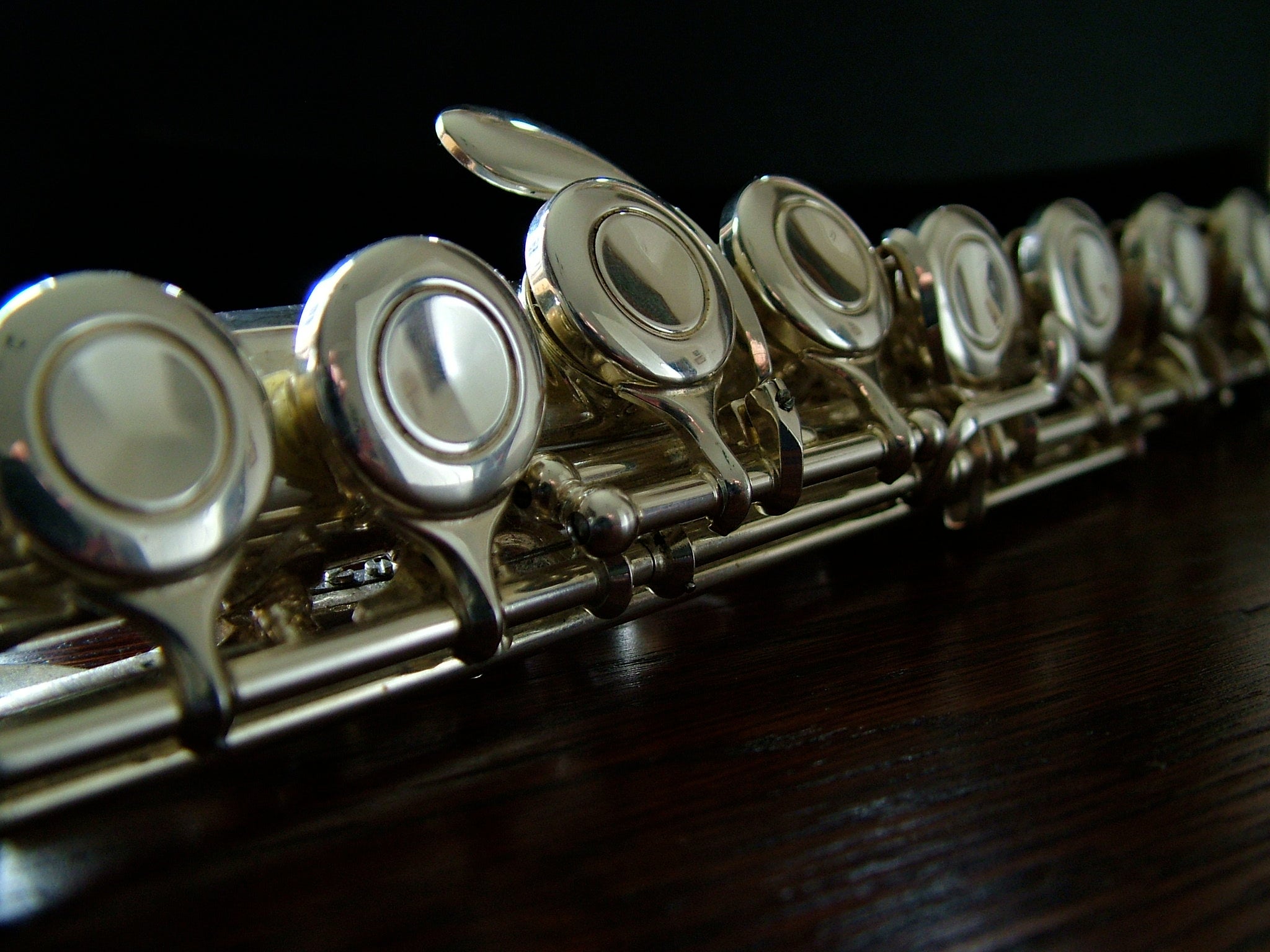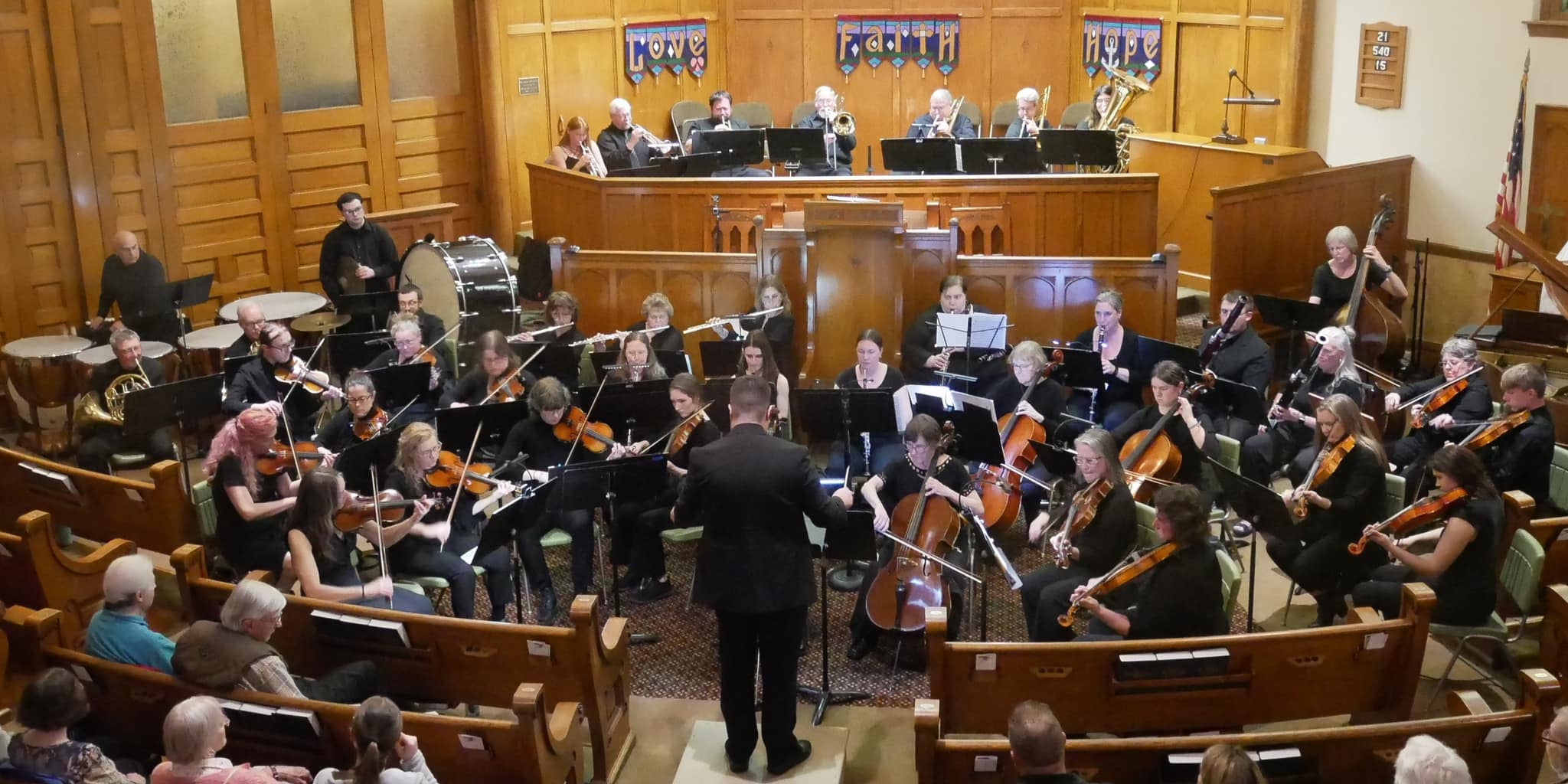The Milwaukee Symphony Orchestra started off 2023 with a three-week “Water Festival.”
For the weekend of Jan. 27-29, the focus was on Baroque works, beginning with Jean-Philippe Rameau’s Suite from “Naïs,” an opera depicting the sea god Neptune’s love story with the eponymous water nymph.
As soloists for Vivaldi concertos, we have two members of the orchestra: violinist Ilana Setapen and flutist/piccolo player Jennifer Bouton Schaub.
News with a little more humanity
WPR’s “Wisconsin Today” newsletter keeps you connected to the state you love without feeling overwhelmed. No paywall. No agenda. No corporate filter.
Finally, Handel’s jubilant Water Music fills Allen-Bradley Hall, sounding out over the Milwaukee River instead of the Thames.
Conductor Nicholas McGegan, the Milwaukee Symphony Orchestra artist-in-residence from 2003-06, took some time out of his busy rehearsal week to respond to questions about the concert from Wisconsin Public Radio’s Lori Skelton.
This interview has been edited for brevity and length:
Lori Skelton: Vivaldi and Handel are familiar names for many concert-goers. What should we know about Rameau?
Nicholas McGegan: Rameau is mainly known as a composer of very grand French operas which have lots of spectacular stage effects and elaborate dancing. Therefore, his music appears relatively seldom on concert programs. Also, the Baroque French style is very ornate and is not so familiar to modern symphony orchestras.
LS: Baroque operas often have a lot going on. ”Nais” is full of titans and giants, shepherds, kings and gods. There are battles and dances. The scenes change from the heavens to the fields to the shoreline. The suite for this weekend’s concerts doesn’t have any singing. Are we meant to follow the plotlines, or are there other elements on which to focus?
NM: Much of the dance music in a Rameau opera is not always directly based on the drama. There are some exceptions in Naïs, such as the magnificent Chaconne which is a depiction of the Isthmian Games, the Corinthian equivalent of the Olympic Games.
Some of the ballet music is not based on the traditional Baroque dances that you might find in a Bach Suite (Courantes, Gigues, Gavottes etc.), but is actually pantomime, in other words dance music that tells a story. These pieces can, I feel, be relished in their own right without direct reference to the plot of the opera.
LS: When we think of tone-painting in music, one of the earliest examples is Vivaldi’s “Four Seasons.” You’ve chosen two Vivaldi concertos for this concert. What kinds of scenes or pictures might we imagine during the performance?
NM: The Seasons is very much the exception in Vivaldi’s concerto output. Not many of his concertos have titles that ask the listener to have specific images in mind.
For example, there are a few others that imitate birdsong or a storm at sea, but neither of these works belong to that genre. The F major concerto with solo violin was not even written for performance in the composer’s native Venice but rather for the much larger orchestra at the Royal Court in Dresden, where one of Vivaldi’s students led the band. Hence the addition of horns and woodwinds to his normal string group.
LS: The Piccolo Concerto was originally written for “flautino” or “ottavino.” How does a modern piccolo compare with these instruments?
NM: A flautino is a tiny recorder, now known as a sopranino — exactly the kind of instrument that might have been played by one of the girls in the orchestra at the Ospedale della Pietà, the orphanage where Vivaldi worked. The recorder is not an instrument that is now found in a modern symphony orchestra, but the piccolo makes an excellent substitute.
LS: You are a conductor of both period instrument and modern instrument ensembles. What changes for you as a conductor when you are working with period instruments? Is the rehearsal process very different?
NM: For Handel or Vivaldi, I make no changes between a modern or a period orchestra. However, Rameau’s musical language is more specialized. There are lots of trills and other ornaments and the rhythms are not always played as notated.
For this music, I always used my own orchestral parts where I have adapted what the composer originally wrote to make it more accessible to a symphony orchestra. Many players in a group such as the MSO have considerable experience playing on Baroque as well as modern instruments. If you look carefully, several of the violinists are using copies of Baroque bows which are smaller and lighter than their usual ones.
LS: In July 1717, King George I and members of the court took a pleasure trip up the Thames on a barge. A second barge held 50 musicians, playing the movements, dances and airs written by Handel. He wasn’t inventing anything new, and yet it had instant appeal. Three centuries later, it’s still popular. What do you find in this music that makes it stand out from other Baroque works?
NM: Actually, the use of French Horns was a novelty in early 18th century England. The Water Music marks one of their first appearances in orchestral music in London.
Handel’s music is full of great tunes and engaging catchy rhythms that must have delighted the first listeners as much as it does now.
LS: If someone not familiar with Baroque music is coming to this concert, what would you suggest that person listen to next? It’s fortunate that there is such a fine collection of recordings that you have conducted, so go ahead and sing Philharmonia Baroque’s praises.
NM: Both Handel and Vivaldi were famous as composers of brilliant Italian operas. Nowadays, there are so many wonderful singers both in this country, and indeed all over the world who shine in performing their virtuoso arias and duets. Listen to Joyce DiDonato, Vivica Genaux and the late lamented Lorraine Hunt Lieberson, three wonderful American divas who bring Baroque music to life in the most wonderful way.
LS: Maestro, you are known for your energy and warm, cheerful demeanor — on and off the podium. Does Baroque music enhance those traits in you? Are you drawn to this music because of who you are as a person?
NM: I do love working within the Baroque repertoire, but I am also very happy conducting classical and early Romantic music. It seems to suit me well. I love listening to later music, such as Verdi and Puccini (what you might call the “tubercular operas”) but I am delighted when someone else directs it. For me, earlier composers give the conductor much more freedom of interpretation than later ones where so much performance information is already in the score.
Wisconsin Public Radio, © Copyright 2026, Board of Regents of the University of Wisconsin System and Wisconsin Educational Communications Board.





